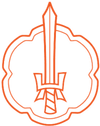A good understanding of your tools can improve your results and promote a happier cutting experience.
There are many reasons to write us your questions and start a discussion among other professionals.
A good understanding of your tools can help you take better control of the situation by targeting head shape, hair texture or density challenges.
You’ll save you time, minimize unnecessary hand, arm, or body posture strain and overall promote a more efficient and enjoyable cutting experience.
Here's are questions from Walid of Montreal, Canada.
1. What are the best texturizing scissors for coarse and thick hair?
2. Do you consider ACRO Type ZD-3 Dual useful and good for barbers?
3. How does the STELLITE Alloy Series hold the cutting edge longer and stronger than the others in your collection?
Here is the reply by Martin, your Canadian Mizutani scissor fitter:
Hi Walid,
Thank you for your interest in Mizutani Scissors Canada. Coarse hair is definitely tougher to cut through. Fortunately, Mizutani Scissors are forged with specific types of alloys and engineered to do this job (and do it well).
STELLITE and Damascus series have a higher ratio of cobalt in the alloy blend and can hold up the cutting edge longer.
Your choices for texturizing scissors should based on these 3 criteria:
1. Desired amount of hair removal:
A) 3-10% Minimal Removal.
This is for those who like to refine their work.
B) 15-25% Moderate Removal.
This is ideal for those who like to control bulk, textures as well as adding separation between hair strands for a dimensional look.
C) 30-50% Heavy Removal
This is ideal for experienced users who can want to sculpt, shape, texturize, control bulk while adding movement at the same time.
2. Space between scissors teeth:
Spaces between scissors' teeth are where un-cut hair will fall into. This cushion or space will enhance separation between hair strands and add movement to the hair flow.
3. Location of the teeth
The location of the teeth dictates the direction of hair flow. Depending on which blade the teeth are located on, the resulting finish will yield a cut forming a 'short to long' pattern.

|
A) Reverse scissors teeth usually are on the moving blade. This is ideal for barbering work as it helps to collapse hair when using scissors over-comb technique. It will also add texture, bulk control and create movement. |

|
B) Regular scissors teeth are ideal for adding lift, texture, bulk control and creating movement. |

|
C) Dual scissors teeth is ideal for refinement as cutting surfaces only happen between the teeth of both blades. Works great on fine hair and redirecting hair movement without fear of over-removal. |
I hope this helps. Please let us know if you have other questions.
Happy cutting,
Martin, Your Scissor Fitter
Mizutani Scissors Canada






